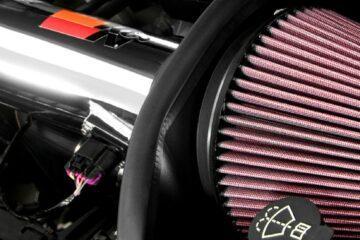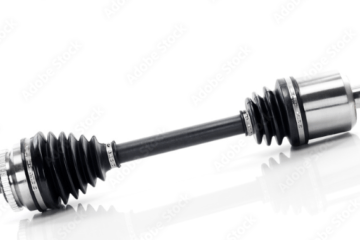It is hardly surprising that our cars are now more intelligent than ever in today’s fast-paced society where technology is seamlessly incorporated into our daily lives. Intricate diagnostic systems are now standard in modern automobiles, and they communicate with us via error codes to give us information about any problems that might exist inside the car. This will help you become a diagnostic sleuth for your car by helping you to understand the mysteries behind these trouble codes. You can better understand your car by learning to “read” these codes, and you’ll also have the advantage of being able to avoid paying for repairs. Come along with us as we debunk the mysteries surrounding automotive error codes and learn how they might be your key to affordable vehicle maintenance.
What are Car Error Codes?
Car error codes are a series of letters and numbers that are generated by a car’s onboard diagnostics (OBD) system. The codes indicate a problem with a particular system or component in the car.
Why Do Cars Generate Error Codes?
Cars generate error codes when there is a problem with a particular system or component in the car. The OBD system monitors the car’s systems and components for problems. When the system detects a problem, it generates an error code.
How to Retrieve Error Codes?
Retrieving error codes might sound like a complex task, but it’s often simpler than you’d imagine, thanks to the On-Board Diagnostics II (OBD-II) system. Most vehicles built after the mid-1990s are equipped with an OBD-II port, which serves as a gateway to your car’s error codes. An OBD scanner is a device that plugs into the car’s OBD port. The error codes will be displayed on the scanner’s screen. The codes will be a series of letters and numbers. The first letter will tell you what system the code is for. The following numbers will tell you the specific problem.
Another way to retrieve error codes is to use a smartphone app. There are a number of smartphone apps that can be used to read error codes from cars. These apps typically connect to the car’s OBD port using a Bluetooth or Wi-Fi connection.
Here is a list of the common OBD error codes:
- P0100: Mass airflow sensor circuit malfunction
- P0128: Engine coolant temperature sensor circuit range/performance malfunction
- P0300: Random/multiple misfires detected
- P0420: Catalyst system efficiency below threshold
- P0430: Secondary air injection system performance
Once you have identified the error code, you can look up the meaning of the code in an OBD code dictionary. The code dictionary will tell you what the problem is and how to fix it.
Fix the problem yourself. If you are comfortable working on cars, you may be able to fix the problem yourself. There are a number of resources available online and in libraries that can help you troubleshoot car problems.
But, if you are not comfortable diagnosing and fixing car problems yourself, you can take your car to a mechanic. The mechanic will be able to use an OBD scanner to identify the error code and diagnose the problem.
Here is a brief explanation of the common error codes that you mentioned:
- Engine Error Codes (P0XXX): These codes are related to the engine and its components. They can indicate problems with the fuel system, the ignition system, the emissions system, and other engine components.
When your engine encounters problems, it has a unique way of spelling out its distress. Engine-related error codes, often beginning with the letter “P” followed by a series of digits, indicate issues ranging from fuel system irregularities to exhaust problems. For example, a P0171 code might signify a lean air-fuel mixture, while a P0300 code suggests random misfires. Deciphering these codes can provide crucial information to diagnose engine performance issues effectively. - Transmission Error Codes (P1XXX): These codes are related to the transmission and its components. They can indicate problems with the gears, the fluid, the solenoids, and other transmission components.
Smooth gear shifts and optimal transmission performance are essential for a comfortable ride. Error codes beginning with “P1” offer insights into transmission-related problems. These codes could point to issues like faulty sensors affecting gear ratio or hydraulic malfunctions impacting shifting performance. By understanding these codes, you can pinpoint transmission problems early, preventing potential complications and costly repairs down the road. - Airbag System Error Codes (B0XXX): These codes are related to the airbag system and its components. They can indicate problems with the sensors, the modules, the wiring, and other airbag system components.
Safety is paramount when it comes to driving, and your vehicle’s airbag system plays a crucial role in protecting you in case of an accident. Error codes beginning with “B0” indicate malfunctions within the airbag system. These codes might relate to faulty sensors, deployment circuit issues, or problems with the crash sensors themselves. Accurate interpretation of these codes can help ensure that your vehicle’s safety features are in optimal working condition. - Anti-lock Braking System (ABS) Error Codes (C0XXX): These codes are related to the ABS system and its components. They can indicate problems with the sensors, the modules, the valves, and other ABS system components.
Anti-lock braking systems are a feature of modern cars that improve stopping power and stability. “C0”-based error codes refer to problems with the ABS system. These codes may indicate issues with the wheel speed sensors, failed hydraulic pumps, or hiccups in system component communication. Maintaining good braking performance and avoiding potential skidding need an understanding of these codes.
It is important to note that these are just brief explanations of the common error codes. The specific meaning of a code can vary depending on the car’s make and model. If you have a check engine light or other warning light on your car, it is always best to have the code read by a qualified mechanic. The mechanic will be able to tell you what the code means and what needs to be done to fix the problem.
Here are some tips for reading your car’s error codes:
- Make sure your car is in park or neutral when you connect the OBD scanner.
- If you have a scanner with a display, make sure the display is turned on.
- Follow the instructions in your scanner’s manual to read the error codes.
- If you have trouble reading the error codes, you can take your car to a mechanic.
By following these tips, you can easily read your car’s error codes and get your car back on the road quickly.
Here are some additional tips for reading your car’s error codes:
- Keep a record of all of the error codes that your car generates. This will help you track the history of problems with your car.
- There are many different OBD scanners available on the market. When choosing an OBD scanner, make sure to choose one that is compatible with your car. You can also find OBD scanners that come with a variety of features, such as live data monitoring and code clearing.
- Do not ignore a check engine light or other warning light. These lights are there to alert you to a problem with your car. Ignoring the light can lead to more serious problems down the road.
Seeking Professional Help:
- When to visit a mechanic. You should visit a mechanic if you are not comfortable working on cars or if you cannot fix the problem yourself. You should also visit a mechanic if the error code is for a serious problem, such as a problem with the engine or transmission.
- What to expect at the mechanic. The mechanic will first retrieve the error codes from your car. They will then interpret the codes and diagnose the problem. Once the problem has been diagnosed, the mechanic will recommend a course of action. This may involve repairing or replacing a part, or it may involve clearing the error code if it is a minor glitch.
- Cost of repairs. The cost of repairs will vary depending on the severity of the problem and the cost of the parts that need to be replaced. In general, repairs for minor problems are relatively inexpensive. However, repairs for major problems can be quite expensive.
Resetting Error Codes:
- Clearing minor glitches. If the error code is for a minor glitch, you may be able to clear the code by disconnecting the battery for a few minutes. This will reset the car’s computer and clear the error code.
- When not to clear error codes. You should not clear error codes if the problem is serious. Clearing the code will not fix the problem and it may make it difficult for you or a mechanic to diagnose the problem in the future.
Preventive Measures and Maintenance:
Ensuring the optimal health and performance of your vehicle goes beyond reacting to error codes—it involves proactive measures that can prevent these codes from appearing in the first place.
1. Regular Maintenance to Prevent Future Error Codes:
Regular maintenance is akin to providing your vehicle with a health regimen. Adhering to your manufacturer’s recommended maintenance schedule is crucial. This schedule typically includes tasks like oil changes, tire rotations, fluid checks, and filter replacements. Regular maintenance helps prevent the gradual wear and tear that can lead to system malfunctions triggering error codes. By addressing potential issues before they escalate, you not only prevent error codes but also extend your vehicle’s lifespan.
- Change the oil and filter regularly. This is one of the most important things you can do to keep your car running smoothly and prevent error codes.
- Replace the air filter regularly. A dirty air filter can restrict airflow to the engine, which can cause engine problems and error codes.
- Check the tire pressure regularly. Low tire pressure can cause the car to handle poorly and can also lead to error codes.
- Get the car serviced regularly. This will help to identify and fix any potential problems before they cause error codes.
2. Driving Habits to Minimize Error Code Occurrences:
Your driving habits have a significant impact on your vehicle’s condition. Smooth driving techniques not only contribute to fuel efficiency but also reduce stress on various components. Avoid sudden accelerations, harsh braking, and sharp turns. Such aggressive driving can strain systems like the engine, transmission, and braking, potentially leading to error code triggers. By adopting a more gentle and controlled driving style, you’re actively reducing the likelihood of encountering performance-related issues.
- Avoid aggressive driving. Aggressive driving, such as hard acceleration and braking, can put a strain on the car’s components and can lead to error codes.
- Don’t overload the car. Overloading the car can put a strain on the suspension and can also lead to error codes.
- Avoid driving in extreme weather conditions. Extreme weather conditions, such as hot weather and cold weather, can put a strain on the car’s components and can lead to error codes.
By following these preventive measures and maintenance, you can help to keep your car running smoothly and prevent error codes.
Here are some additional tips for preventing error codes:
- Read your owner’s manual. The owner’s manual will have specific maintenance requirements for your car.
- Pay attention to warning lights. If a warning light comes on, take your car to a mechanic as soon as possible.
- Keep an eye on your car’s performance. If you notice any changes in your car’s performance, such as decreased gas mileage or a rough idle, take your car to a mechanic.
By following these tips, you can easily read your car’s error codes and keep your car running smoothly for many miles to come.



